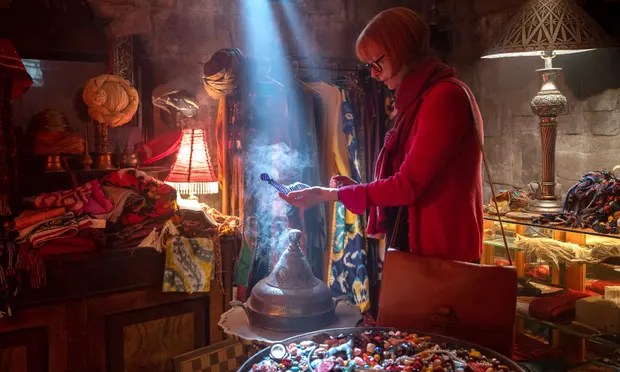Why does Three Hundred Years of Longing miss the mark?

I was intrigued by the premise of Three Thousand Years of Longing: Alithea, a professor, attends a conference in Istanbul and is drawn into the stories of the city’s past. The orientalist approach towards the East did leave me disappointed, but there was something else that made the stories in the film come across as flat and inauthentic.
But before that, let’s rewind to orientalism which has been the main discussion in the criticism of this movie. Edward Said, a Palestinian-American public intellectual, defines orientalism as:
Edward Said draws attention to the exteriority of the Orientalist who is often, as in this movie, an English or French scholar who wants to understand and define the East. This becomes a way of ruling over the East since the way that these scholars define the east, from an external point of view, often reveals how the western scholar perceives the East rather than what it actually might be. Perceiving itself as the rational and progressive counterpart, the Western scholar describes the East as exotic, mysterious, and backward.
In the movie, Alithea represents this external point of view. Despite Djinn being the teller of the tales, the tales are framed by the narrative of Alithea. The film starts with her narration and ends with her narration. She is the one that gives form to the entire story. Alithea frames all the stories, but her character is so unbelievably underdeveloped that there is just one way to describe her: an English scholar. And so, right off the bat, it is difficult to interpret her perspective in this movie as anything but an orientalist one.
Guided by a Turkish colleague, Alithea wonders around the Grand Bazaar where everything is presented in an artificial air of mystery and mysticism. Alithea is somehow drawn to an old mysterious bottle in a shop, brings it to her hotel room, and unleashes a Djinn that has been trapped in the bottle. Why was she, an English tourist, among all the people of Istanbul, drawn to this bottle? It is left unexplained. Djinn offers her three wishes and informs her that he is forever bound to the bottle unless she makes the three wishes.

Alithea is not convinced. Despite Djinn’s future already being in her hands, she demands that Djinn also hand her the stories of his past. So, Djinn begins telling his story starting from the time of Queen of Sheba and King Solomon. Occasionally, he stops and listens to Alithea’s questions and comments which offer no insight beyond a superficial fascination with other cultures.
Telling these tales is a matter of life and death for Djinn as he has to convince Alithea to make three wishes or else he will remain bound to a bottle. Here, the movie invokes One Thousand and One Nights which is about a Sasanian king who kills his wife upon discovering her infidelity. Believing all women are the same, he marries virgins only to execute them the next morning. Eventually, he marries a woman called Scheherazade who manages to survive by telling a tale and leaving it at a cliffhanger every night. To hear the end of the tale, the king postpones her execution, and when one tale ends, she immediately starts another and manages to postpone her execution indefinitely. So, telling the tales of the past is a way of survival for Djinn as it is for Scheherazade.
Eventually, Djinn begins telling the story of the Ottoman sultan Murad IV who is known to be the cruelest sultan of all. By choosing to feature Murad IV among thirty-six Ottoman sultans, the movie perpetuates the stereotype of the cruel and raging expansionist Turk. The Ottoman historical characters are mostly represented as irrational, barbaric, and uncivilized. But that aside, the story of Murad IV is worth mentioning. Historically, Murad IV is known for being a ruthless soldier, and also for his oppressive rule that involves banning tobacco and coffee and walking around the city in disguise to assassinate those who break his ban. In the movie, Murad comes back from war and is depicted in extreme distress and anger, which implies that he suffers from a mental condition like PTSD. His mother hires storytellers to appease his aggression. Among tens of talented storytellers, only an old man manages to capture the interest of the bellicose Sultan.
Both the old man’s survival and Sultan’s mental stability depend on the stories told by the old man. These stories are linked to life and death as in One Thousand and One Nights. Ultimately, they suggest that we can only continue existing by revisiting the past and telling stories of the past. Murad’s death, shortly after the old man’s death is a symbolic confirmation of this.
To me, it seemed like the movie wanted to make this point about stories, but it was unsuccessful in doing so. For the Gynn, Murad, and the old man, the stories of the past are intermingled with the present. Alithea, on the other hand, is depicted as a comfortable middle-class English scholar who listens to and retells these stories of life and death as nothing but curious matters. She is unbelievably detached from the actual circumstances of these stories and the circumstances of her own present. Despite its beautiful—if Orientalist—imagery and visual effects, the movie falls flat not only because its storyteller has no stake in the stories she tells.

